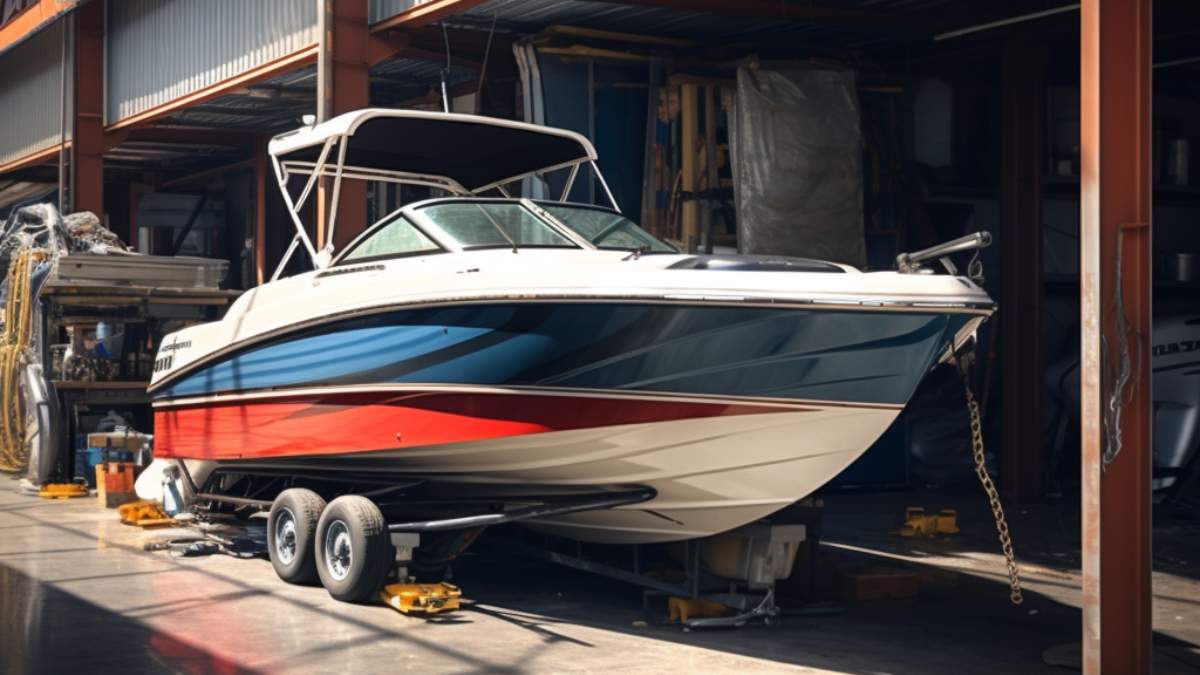In locations where temperatures drop below freezing, you will want to winterize your boat to avoid disruptions or damage. RecProtect is here to give you 9 simple steps to winterize your boat efficiently:
1. Replace Engine Oil
Old oil sitting in an engine for months can lead to corrosion of engine parts. Warm up the engine and flush out as much impurities as possible before replacing the oil. Ensure you use high-quality oil and filters as recommended by your specific engine’s manufacturer.
2. Remove Water from Engine
Water will expand when it freezes, resulting in damage to your engine. Follow your engine owner’s manual, as every model is a bit different, to ensure you have drained all hoses, valves, plugs and holes your vessel might have.
3. Stabilize Fuel
Fuel deteriorates quicker than you might think, causing build up within your engine. Simply draining the gas won’t solve this problem alone. Instead, drain the tank, fill it with fresh fuel and add fuel stabilizer. Stabilizer prevents the fuel from deteriorating over winter storage months, in turn, preventing potential damage to your engine and motor.
4. Fog the Engine
Shield your engine from moisture that promotes corrosion of parts by fogging your machine. This protective spray is a coating of oil that prevents issues with internal engine parts during this lengthy storage.
5. Replace Gear Oil
Simply drain the lower unit of gear oil and replace it with a fresh supply. This will protect the transmission from moisture and corrosion during winter storage.
6. Grease and Lubricate
Lubricating your grease fittings defends against rust, corrosion and oxidation throughout your steering mechanisms. As the location of these are different for every boat, refer to your owner’s manual to be sure you don’t miss any important areas on yours.
7. Leave Nothing Behind
Be sure to clean out your boat of all personal items and valuables before storing for the winter to avoid potential thefts. This also includes any food or drinks you may have had in there as those scents encourage animals to intrude as well.
8. Clean and Wax
Begin with the inside of your vessel, cleaning all seats, flooring and trim as dirt and stains will only get worse if left sitting for several months. Next, power wash the hull of your boat to remove any barnacles or other marine life/bacteria attached to it. Lastly, waxing the boat adds a solid layer of protection too.
9. Cover and Store
Ensure your boat is being stored in a proactive way, as snow and ice exposure can cause issues. The best choice is to store your boat in a dry, covered location that can protect it from the winter elements. However, if this isn’t an option, a durable cover, or shrink wrap, provides at least one layer of protection from the winter weather it may be exposed to.
Winterization and Comprehensive Boat Insurance with RecProtect
Being aware of proper winterization allows for a smooth transition when the boating season comes again. However, it’s essential to remember that even with the proper winterization, unexpected events can still happen. That’s why we suggest getting comprehensive boat insurance. Boat insurance can protect against various risks, including theft, vandalism, accidents, and unforeseen damage. Before you store your boat this winter, take the time to review your insurance policy or consult with a RecProtect insurance agent to ensure that you have the appropriate coverage in place. With RecProtect, you can enjoy the winter months worry-free, knowing that your boat has the right coverage.
